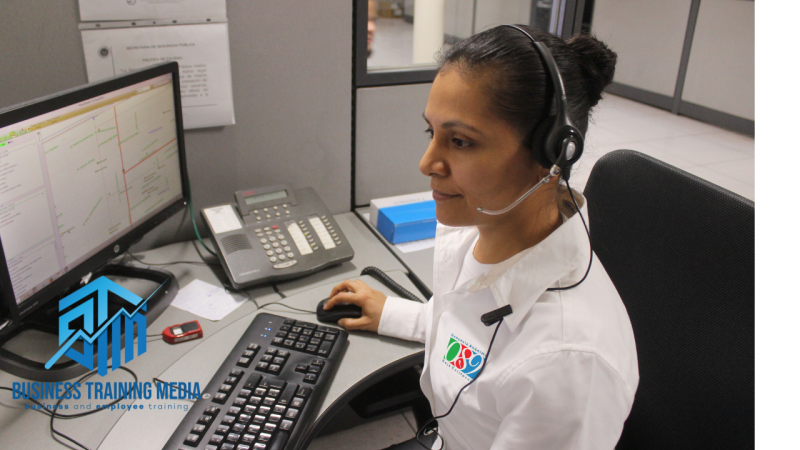
How to Handle An Irate Customer Over the Phone
By Business Training Media
Customer service is an essential aspect of any business, and occasionally, customer interactions can become challenging. Dealing with an irate customer over the phone requires finesse, empathy, and effective communication skills. This article aims to provide a detailed guide on how to handle an irate customer over the phone, helping customer service representatives maintain professionalism, diffuse tension, and ultimately resolve the customer's concerns. Here are ten strategies for dealing with an irate customer over the phone:
- Stay Calm and Composed: When faced with an irate customer, it is crucial to remain calm and composed. Take a deep breath, maintain a positive mindset, and focus on the customer's issue rather than the customer's attitude. Remember, you represent your company and should strive to maintain professionalism throughout the interaction.
- Listen Attentively: Listening is key to understanding the customer's frustration. Allow the customer to express their concerns fully without interruption. Pay attention to their tone, words, and emotions, as this will help you empathize and respond appropriately. Show genuine interest by using verbal cues such as "I understand," "I see," or "Tell me more."
- Show Empathy: Empathy plays a vital role in diffusing customer anger. Let the customer know that you understand their frustration and acknowledge their feelings. Use phrases like "I can understand how frustrating this situation must be for you" or "I apologize for any inconvenience this has caused." Empathy can help create a connection and build trust with the customer.
- Avoid Arguing or Interrupting: It's crucial to avoid arguing with the customer, even if you believe they are mistaken. Arguments will only escalate the situation further. Instead, focus on finding a solution to their problem. Never interrupt the customer while they are speaking, as it may intensify their frustration. Give them the opportunity to express themselves fully before responding.
- Take Ownership of the Issue: Assume responsibility for the problem, regardless of who may be at fault. Apologize sincerely for any inconvenience caused and reassure the customer that you are committed to finding a resolution. Taking ownership demonstrates accountability and helps to rebuild trust with the customer.
- Repeat and Clarify: After the customer has explained their concerns, summarize the issue in your own words to ensure you understand it correctly. This demonstrates active listening and allows the customer to confirm that you comprehend their problem accurately. Seek clarification if needed, and let the customer know you are committed to resolving the issue.
- Offer Solutions: Present the customer with possible solutions to address their concerns. Be prepared with alternatives or options that can help resolve the problem promptly. If necessary, consult with a supervisor or team leader to find the best resolution. Engage the customer in the decision-making process to give them a sense of control and involvement.
- Maintain Professionalism: Throughout the conversation, maintain a professional tone and demeanor. Refrain from using inappropriate language or becoming defensive. Even if the customer becomes increasingly agitated, remain composed and continue treating them with respect. Professionalism will help defuse tension and foster a more productive dialogue.
- Follow-Up and Follow Through: Once a resolution has been reached, confirm the details with the customer, including any actions or steps to be taken. Provide a timeline for when they can expect the issue to be resolved. If necessary, arrange a follow-up call to ensure the customer's satisfaction. Following through on your commitments demonstrates reliability and reinforces your dedication to customer service.
- Self-Care and Support: Dealing with irate customers can be emotionally draining. Take care of your own well-being by practicing self-care. Engage in stress-reducing activities, seek support from colleagues or supervisors, and utilize resources provided by your organization, such as debriefing sessions or counseling services. Taking care of yourself will help you maintain a positive attitude and continue providing excellent customer service.
Handling an irate customer over the phone requires patience, empathy, and effective communication skills. By staying calm, actively listening, and demonstrating empathy, you can defuse tension and work towards a satisfactory resolution. Remember, every customer interaction is an opportunity to turn a negative experience into a positive one and strengthen customer loyalty.
© Copyright 2023 - Business Training Media, Inc.
Join Our Free HR Training Solutions eNewletter
Join our free HR Training Solutions eNewsletter today to stay up-to-date on the latest industry trends, training and development programs, best practices, and expert insights. Gain valuable knowledge, enhance your skills, improve your organization, build productive teams and elevate your career. Don't miss out on this invaluable resource – sign up now for our free HR Training Solutions eNewsletter!

50 Activities for Dealing With Difficult Discussions at Work
Teach employees how to be better and more confident communicators – in just a matter of minutes.




